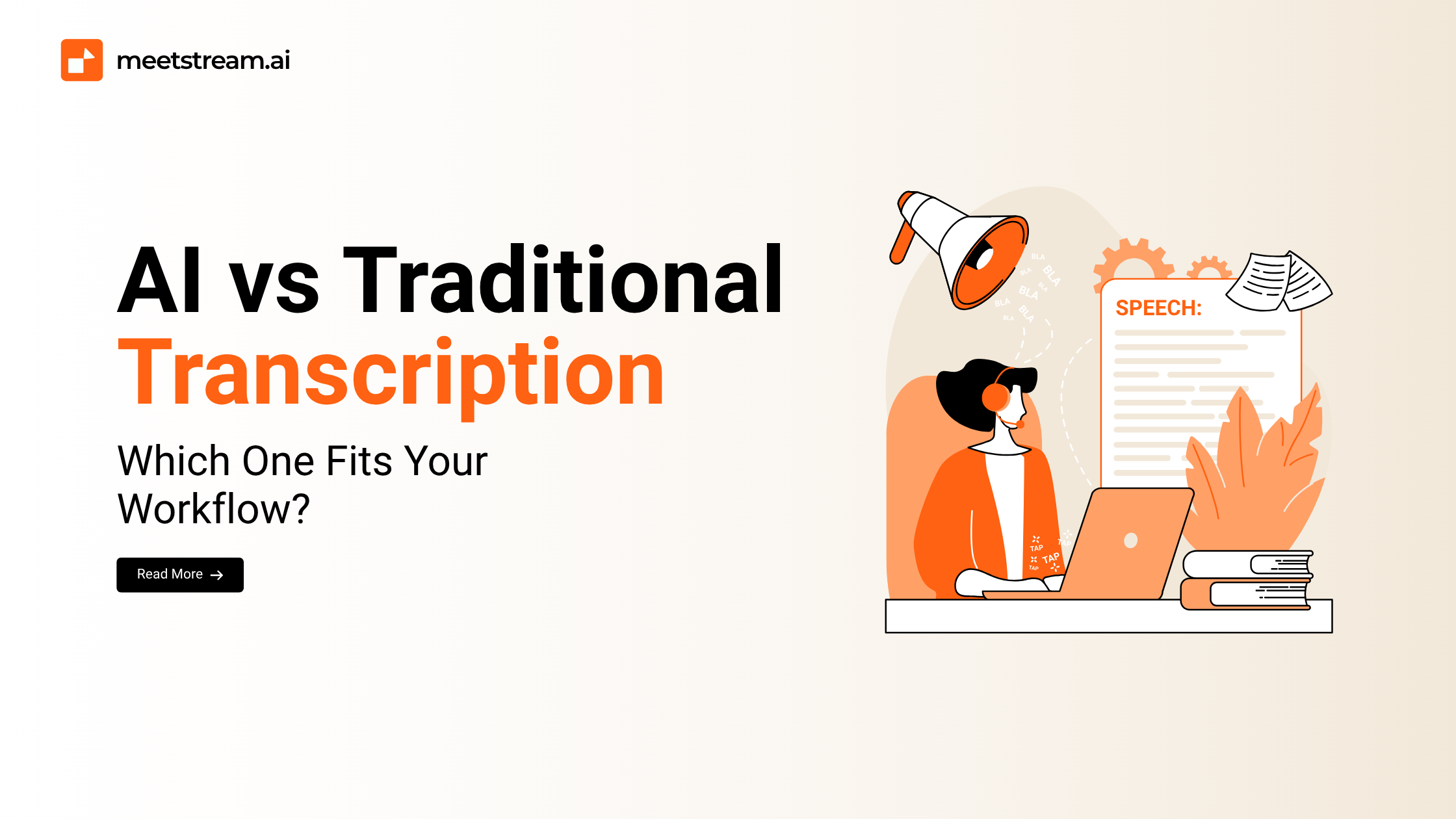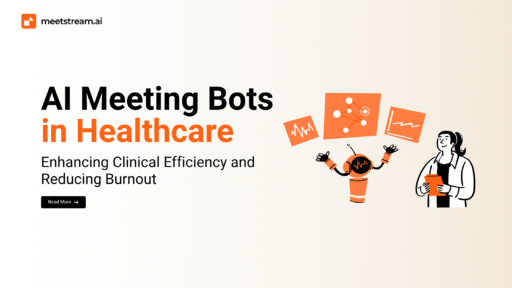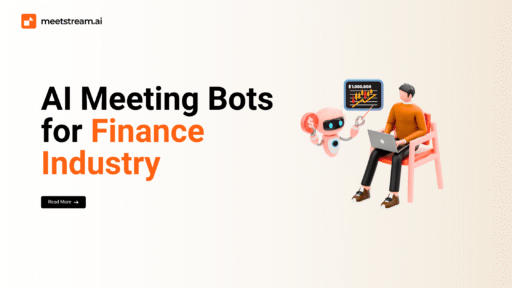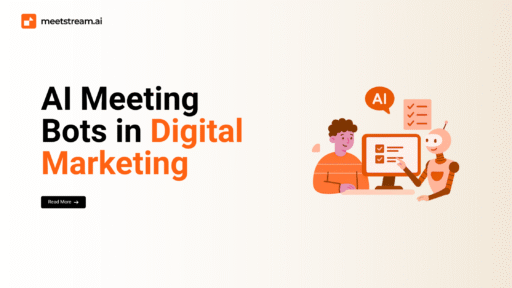Workplaces have undergone a profound shift. Remote and hybrid work models aren’t temporary experiments—they’re the new standard. As organizations adapt, the tools they use to stay connected must also evolve.
In this new reality, recording conversations isn’t enough. Teams need solutions that interpret, organize, and act on meeting content, not just store it.
That’s where the conversation around AI meeting agents vs. transcription tools becomes more than a feature comparison—it’s a strategic choice.
Are you content with a static transcript, or do you need a virtual collaborator that flags action items, generates summaries, and syncs with your workflow in real-time?
As searches for “best meeting notes tool 2025” surge, it’s clear that the future of work demands more than just voice-to-text. Let’s unpack the difference.
What Are Traditional Transcription Tools?
Traditional transcription tools—like Rev, Temi, or basic versions of Otter.ai—are designed to convert spoken language into written text, often in real time.
They capture meeting audio and generate a verbatim transcript, complete with timestamps and speaker labels.
These tools are incredibly useful in interviews, legal discussions, academic research, or compliance-heavy environments, where precision is key.
However, they’re fundamentally descriptive, not analytical. They tell you what was said, but not what it meant.
You’re left to extract insights, assign tasks, or find follow-ups manually. For teams trying to move quickly and stay aligned, that’s a significant gap.
Key Features of Traditional Transcription Tools
Here’s what you typically get with a standard transcription tool:
- Manual or AI-Assisted Transcription: Upload pre-recorded audio or enable live transcription during calls.
- Timestamps and Speaker Labels: Transcripts are broken down by time segments and labeled by speaker (if supported).
- Downloadable Files: Export transcripts as .txt, .pdf, or .srt for captions, record-keeping, or offline review.
- No Real-Time Collaboration: These tools are post-meeting solutions. There’s no engagement during the conversation itself.
- Minimal Contextual Intelligence: No summaries, no action-item detection, no decision tagging, no integration with productivity tools.
In short, transcription software is great for documentation, but lacks workflow intelligence. It records what happened—but not what to do about it.
AI Meeting Agents: Smarter, Faster, More Proactive
AI meeting agents aren’t just smarter—they’re designed for the reality of modern work. Unlike transcription tools that passively record, these virtual meeting assistants actively analyze, extract, and act on information in real-time.
Instead of spending hours revisiting long transcripts, teams instantly get contextual summaries, flagged decisions, and next steps.
This means faster decision-making, more focused collaboration, and less time wasted on follow-ups.
Imagine walking out of a meeting and already having your task list auto-created in Jira or HubSpot—that’s what these AI assistants do.
Power Features That Go Beyond Notes
AI meeting agents are productivity powerhouses. Each feature is built not just to record meetings but to enhance outcomes.
- Automated Meeting Summaries: Teams receive ready-to-share summaries highlighting decisions, blockers, and owners within seconds. No need to sift through transcripts to update clients, managers, or stakeholders.
- Live Summarization: Stay aligned even if you join late. Real-time summaries help you catch up instantly, keeping meetings flowing without pause or repetition.
- Action Item Extraction: “Discuss report by Thursday” becomes a live task in ClickUp or Notion. You’re no longer responsible for remembering everything—your AI handles task creation for you.
- Speaker Intelligence & Sentiment Detection: Understand who’s driving conversations, who’s disengaged, and where tension is building. Great for project managers and team leads who need to keep morale and clarity in check.
- Calendar-Integrated Bots & Reminders: Never forget a follow-up. These agents schedule your meetings, send reminders, and even nudge stakeholders to act—without you lifting a finger.
Breaking It Down: How Do AI Agents Differ from Transcription Software?
Let’s compare AI meeting agents vs transcription tools to highlight their biggest differences:
1. Understanding Context, Not Just Words
Traditional transcription tools convert speech into text:
“Let’s allocate the budget next quarter.”
An AI meeting agent goes further:
- “Allocate budget” → Detects this as a potential action item.
- “Next quarter” → Translates this into a date range, mapped to your team’s calendar or project sprint.
That’s the difference between documentation and comprehension.
AI agents showcase conversational intelligence, allowing you to act on what’s said, not just read it later.
2. Built-In Workflow Automation
With transcription software, the process stops at output:
- Download transcript
- Read manually
- Forward to others
- Copy-paste tasks into a tool
AI meeting agents flip the model.
They automate the next steps without user input.
Example: If someone mentions a sales deal, your AI agent updates HubSpot, notifies your rep via Slack, and sets a follow-up task — instantly.
This deep integration with work tools shifts your role from note-keeper to strategic operator.
3. Collaboration in Real Time
Transcription tools are great for post-meeting reference.
But what if your team needs instant clarity?
AI agents provide live summaries and highlight critical updates as they happen.
You don’t miss action items. You don’t repeat yourself. You align faster, especially in large, cross-functional teams.
4. Personalized to Your Team’s Workflow
Over time, AI meeting assistants learn your team’s:
- Jargon and acronyms
- Project code names
- Role-specific preferences
- Recurring tasks and workflows
They use this knowledge to generate personalized dashboards, highlight VIP participants, and adapt summaries based on what matters most to you.
In contrast, transcription tools treat every meeting the same — no customization, no learning, no memory.
5. Long-Term Value Over Cost
Transcription platforms may be cheaper upfront, often billing by the minute or by file.
But their ROI is limited to documentation.
AI meeting agents, while priced per user or seat, can:
- Save 30+ minutes per week per user
- Reduce missed follow-ups and errors
- Cut the time spent switching between tools
Over time, that turns into hours saved, fewer dropped balls, and better team alignment.
No wonder they’re dominating “best meeting notes tool 2025” lists — they deliver compounded value, not just transcribed words.
Build Your Meeting Bot with Ease
While tools like Fireflies.ai, Avoma, or tl;dv offer powerful off-the-shelf meeting agents, not every organization wants a plug-and-play solution. Some need full control — from data handling to workflow customization. That’s where we step in.
MeetStream.ai provides a universal API that makes it incredibly easy for developers to build custom AI meeting bots tailored to their team or client needs. Whether you want to:
- Auto-join meetings via Zoom, Teams, or Google Meet
- Stream real-time audio to speech recognition engines like Whisper or Deepgram
- Extract action items and update tools like Jira, Trello, or Slack
- Generate structured meeting summaries and share them instantly
…you can do it all without reinventing the wheel.
By abstracting away the complex infrastructure — from media pipelines to diarization and calendar integrations — MeetStream lets product teams focus purely on logic, branding, and user experience.
It’s the smart layer powering the next generation of proactive, voice-aware bots.
For startups, SaaS platforms, and internal tools alike, MeetStream.ai is the backend brains behind smarter meeting automation.
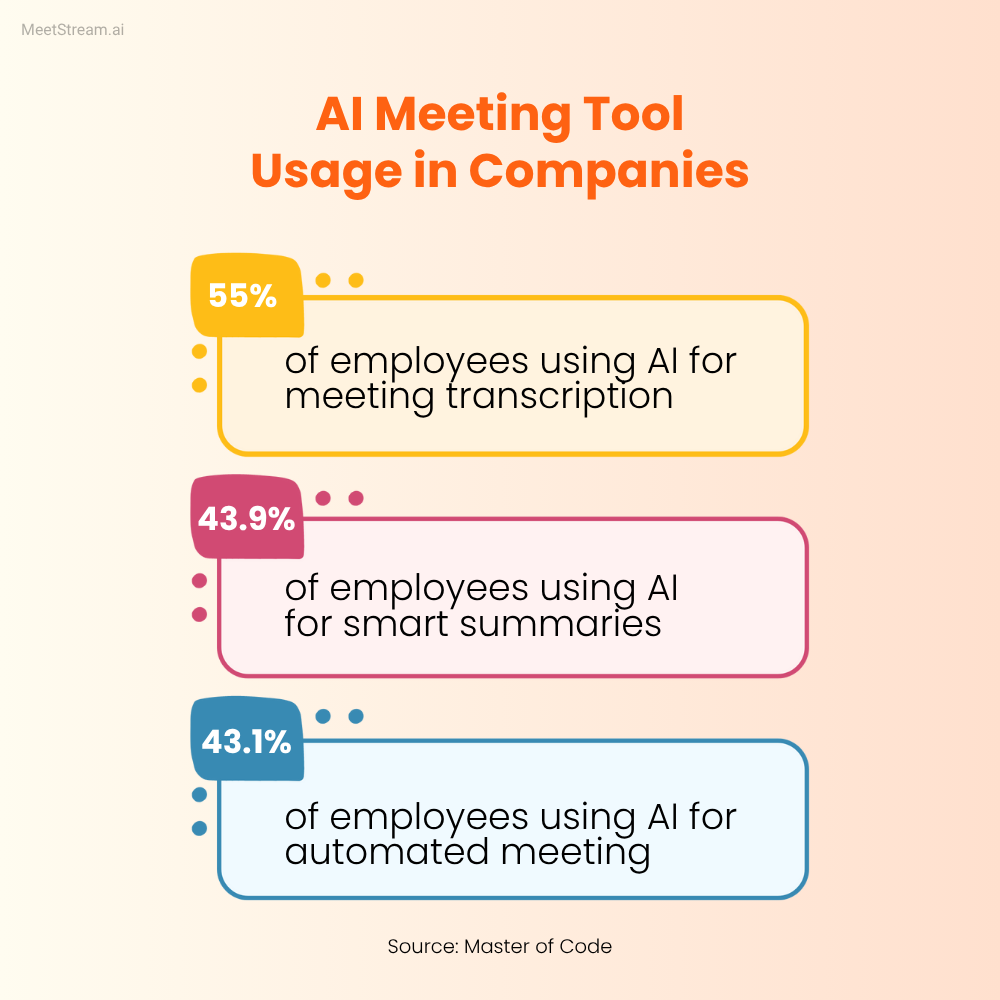
Choosing the Right Tool Based on Your Team’s Needs
When selecting between transcription tools and AI meeting agents, the best choice hinges on how your team operates — and what outcome you’re really after: documentation or action.
When a Transcription Tool Is the Right Fit
Stick with traditional transcription software when your goals are limited to accurate, one-time written records.
Use a transcription tool if:
- You’re conducting one-off interviews or journalistic research where capturing verbatim quotes matters most.
- You need legal depositions or compliance-grade transcripts for audits or records.
- The result is pure documentation, not action, follow-ups, or integrations.
- You have occasional transcription needs and don’t want to commit to monthly subscriptions.
In these cases, investing in AI agents might be overkill. A basic transcription service will do just fine — no integrations, no bots, just raw text.
When an AI Meeting Agent Makes More Sense
Choose AI-powered meeting agents when meetings are frequent, dynamic, and tied to outcomes, not just records.
Use an AI agent if:
- You run recurring meetings like daily standups, sprint reviews, or weekly ops syncs.
- You rely on action items and want them pushed automatically into tools like Asana, HubSpot, or Notion.
- Your team is remote-first and needs calendar-integrated bots that auto-join and take notes.
- You often miss follow-ups because post-meeting chaos buries next steps.
- You want summaries auto-generated in real time, freeing your team from manual note-taking.
This is where tools like MeetStream.ai shine. Instead of buying yet another SaaS product, MeetStream lets developers build custom AI agents that auto-join meetings, extract insights, and trigger workflows — all using a single universal API.
For product-led, sales-driven, or ops-heavy teams, this means complete control over how meetings are captured, summarized, and acted upon.
Whether you want to create a bot that syncs with CRMs, updates dashboards, or pings task reminders, MeetStream.ai makes it possible without building from scratch.
Final Thoughts
The choice between AI meeting agents and traditional transcription tools comes down to purpose.
If you only need to capture words, transcription tools will do the job. But if you want clarity, follow-through, and intelligent automation, AI assistants are the next step—turning scattered discussions into structured, actionable workflows.
MeetStream.ai makes this possible with a universal API for building and scaling custom meeting bots, so you can integrate real-time transcription, summarization, and task automation directly into your products or workflows.
With adaptability, precision, and enterprise-grade reliability, it’s the future-proof way to transform how your team meets and executes.
FAQs: Everything You Need to Know
1. Can AI agents completely replace human note-takers?
Yes, for routine meetings. They capture decisions and tasks accurately. But in high-stakes or legal situations, human oversight ensures nuance and compliance.
2. Do AI meeting tools work offline?
Most rely on cloud-based speech-to-text engines for accuracy and processing. Offline options exist (e.g., on-device Whisper models), but they demand heavy compute and still lag in robustness.
3. How accurate are AI agents with various accents?
Leading platforms hit 94–98% accuracy in clear settings. Variations in accent, jargon, or multiple speakers can affect precision, though model improvements continue to close the gap.
4. Are these tools secure and compliant?
Enterprise-grade solutions offer encryption at rest/in transit, SOC 2 Type II, GDPR compliance, and optional on-premises deployment. Always check vendor documentation.

